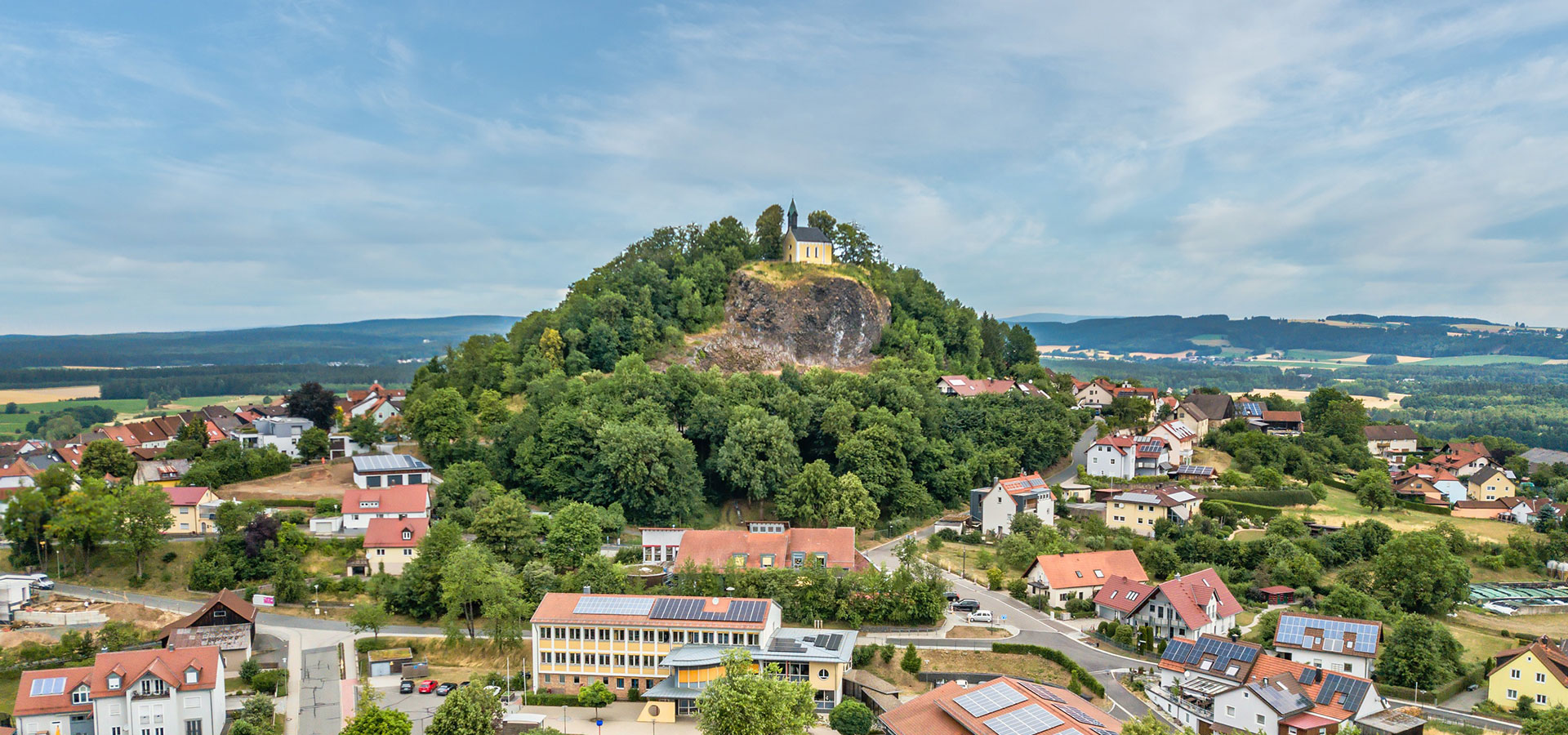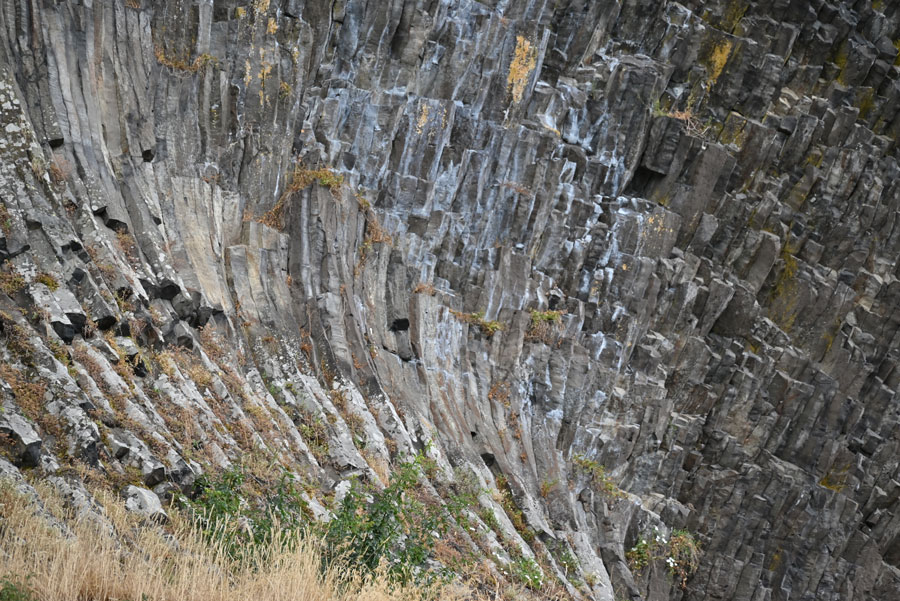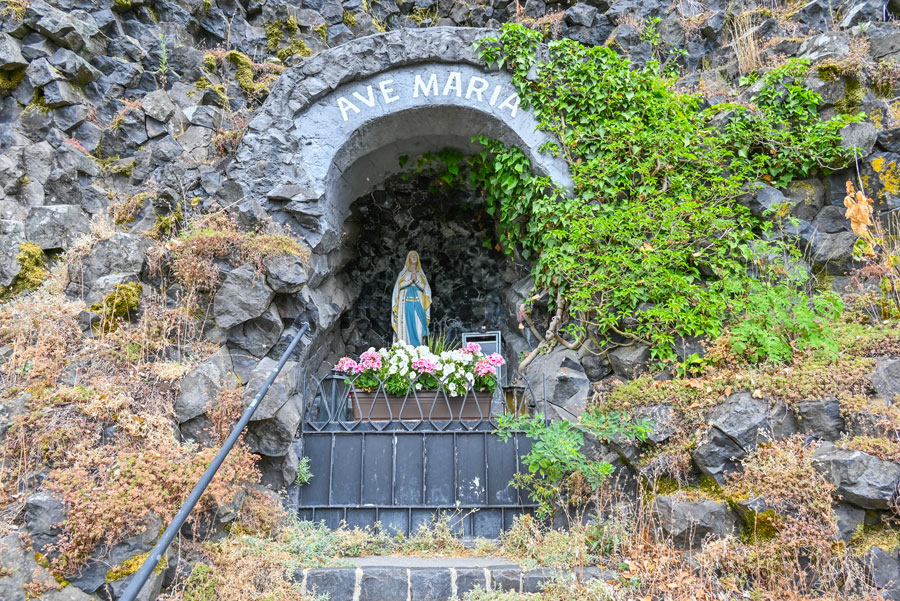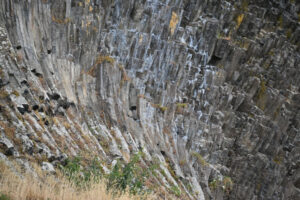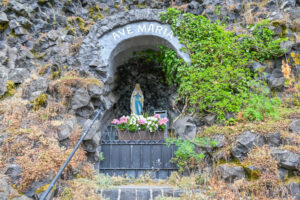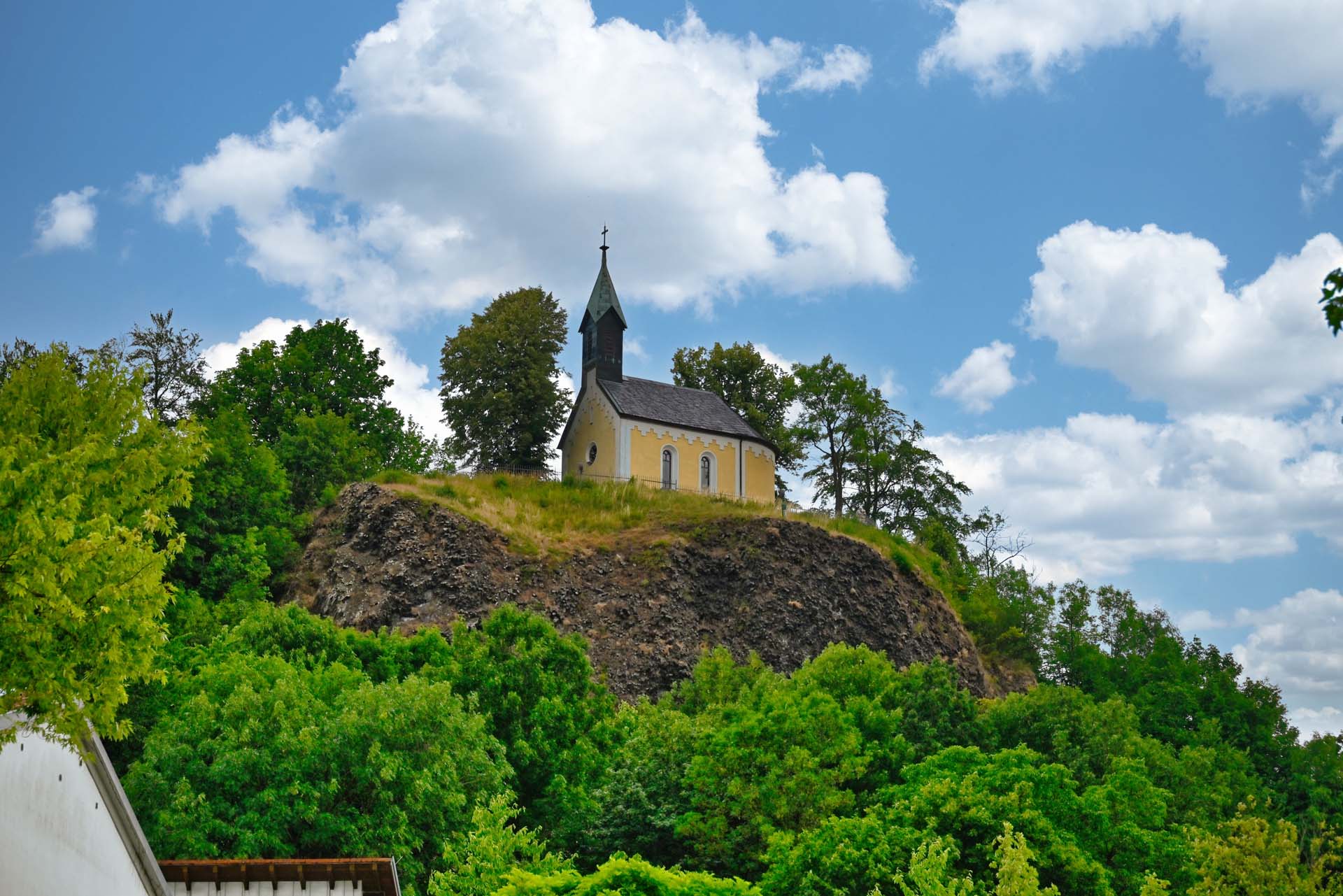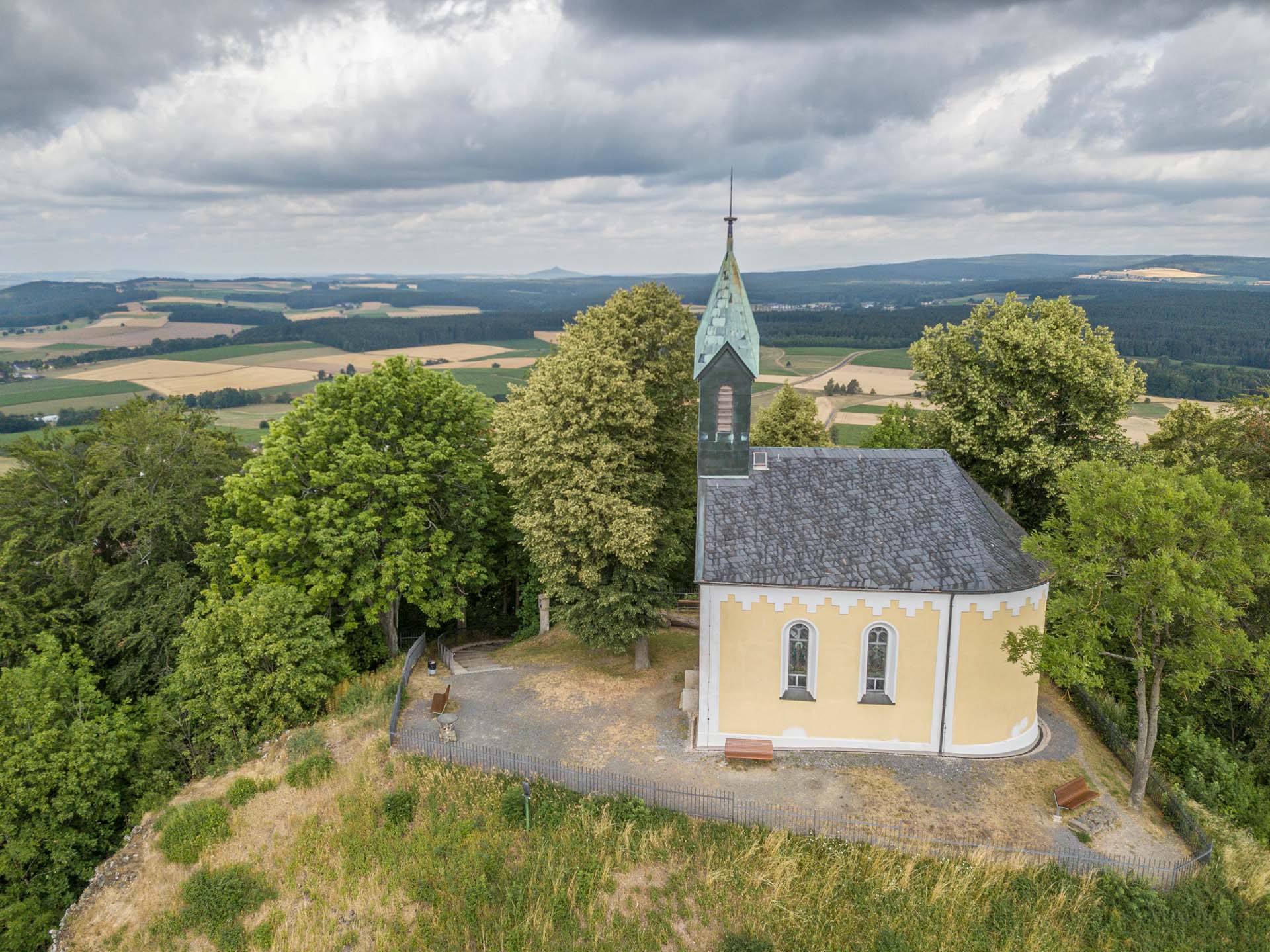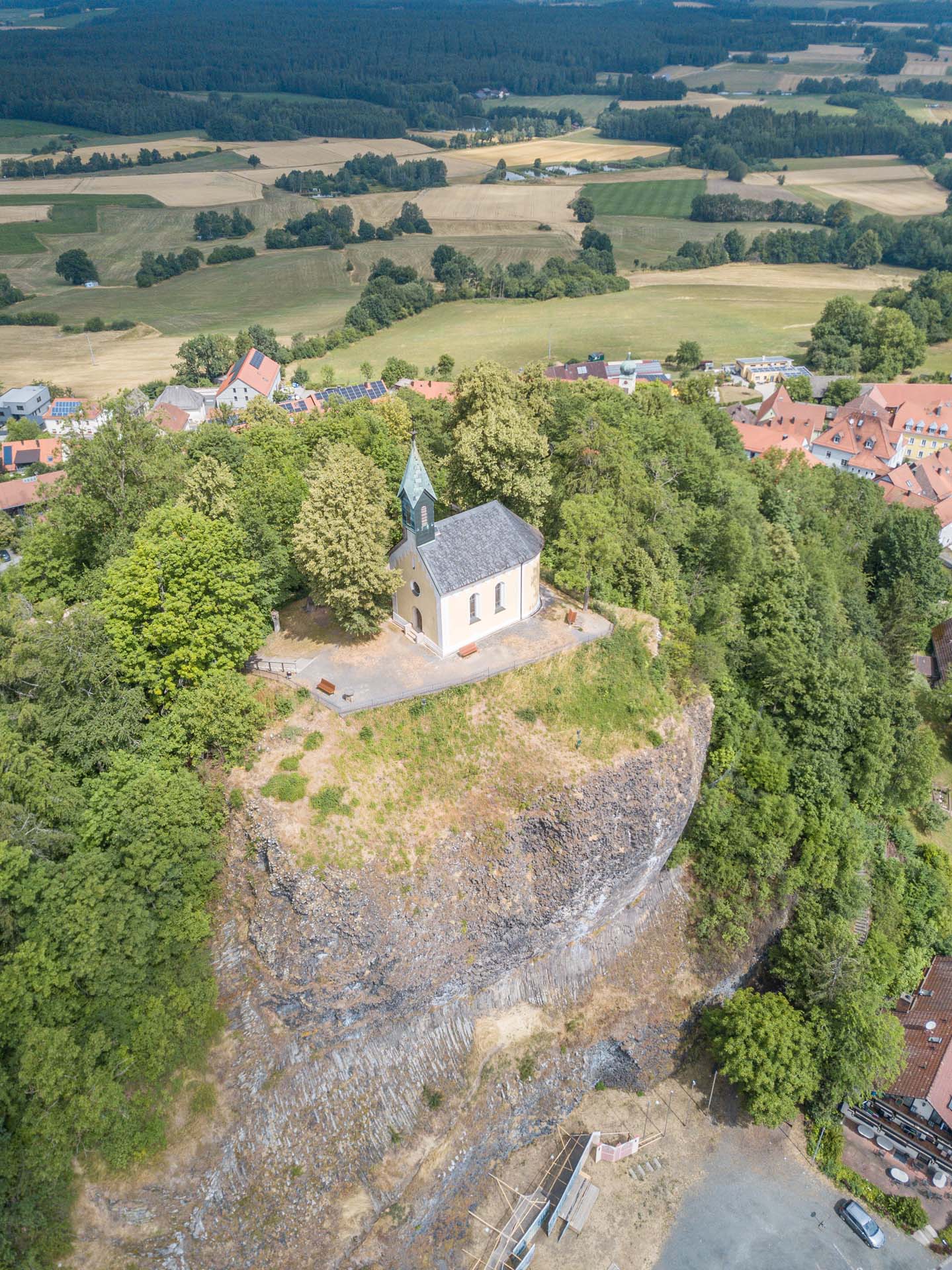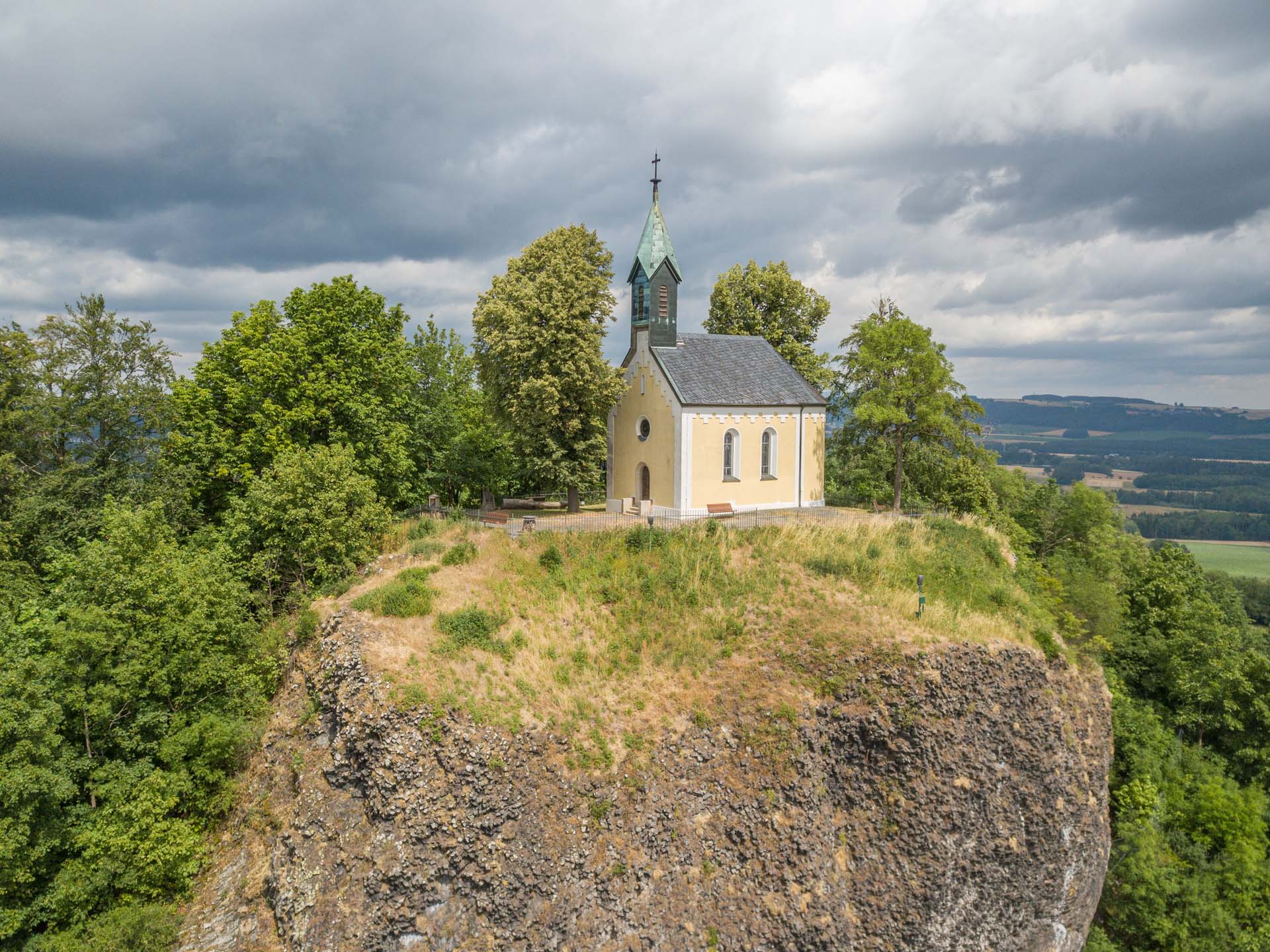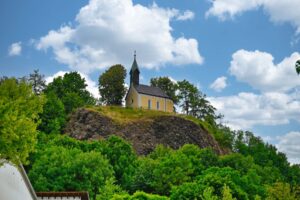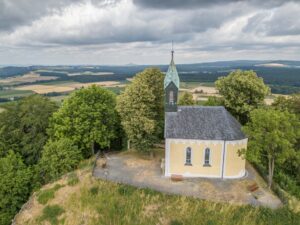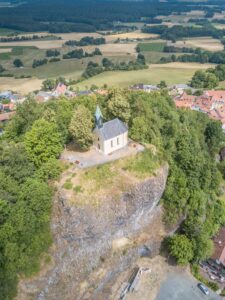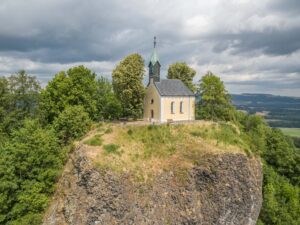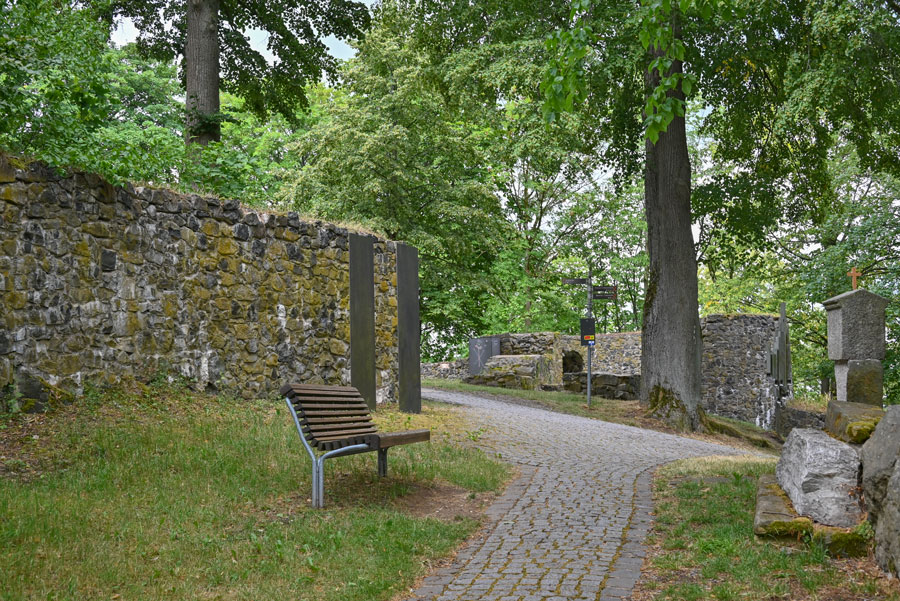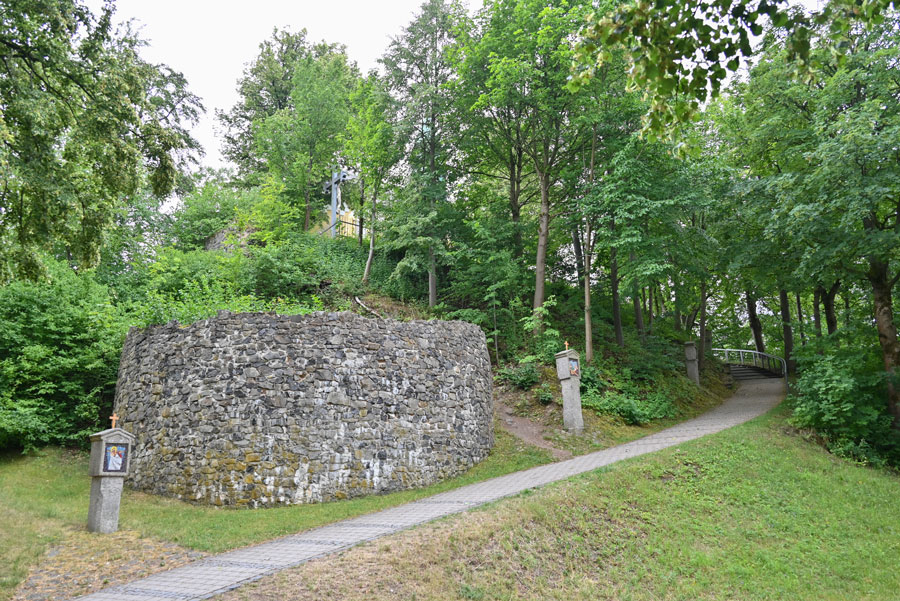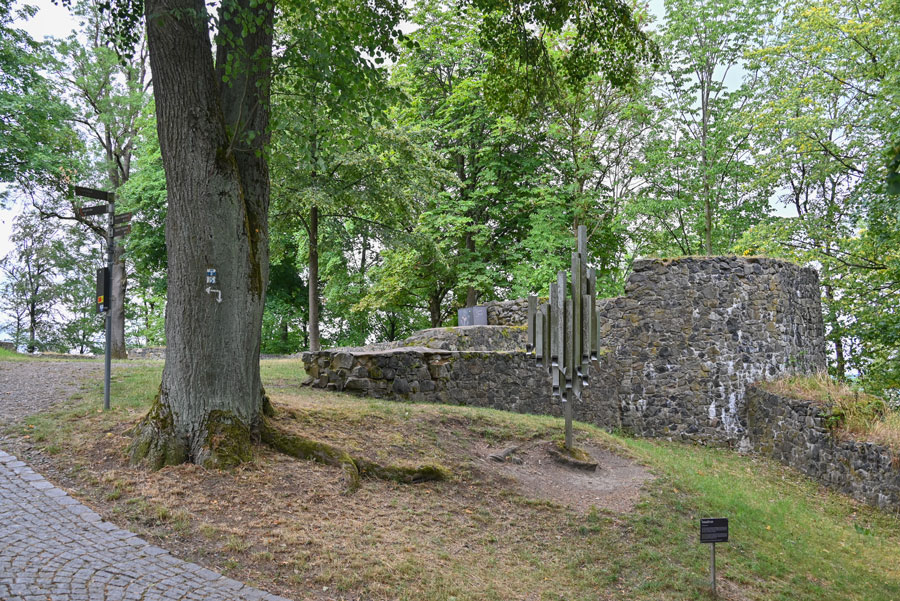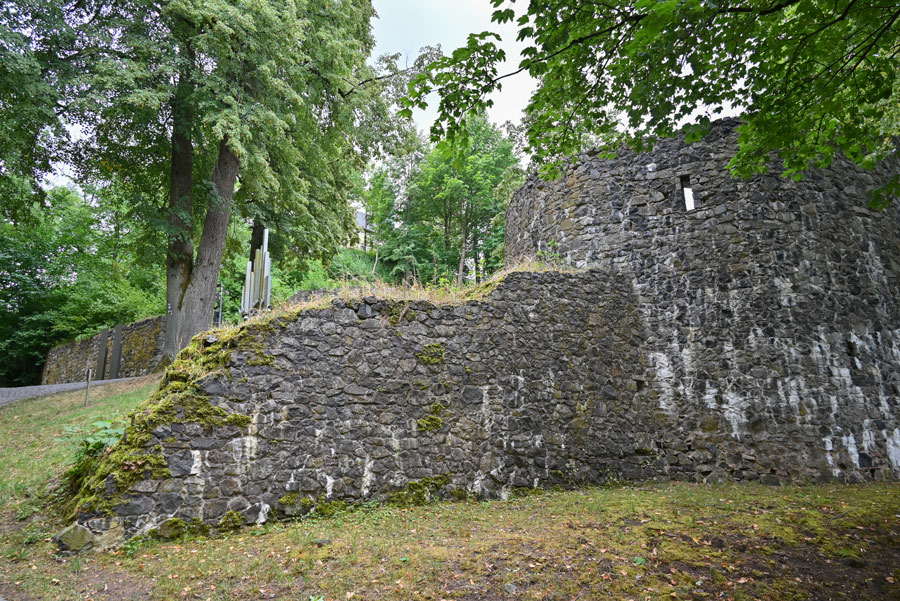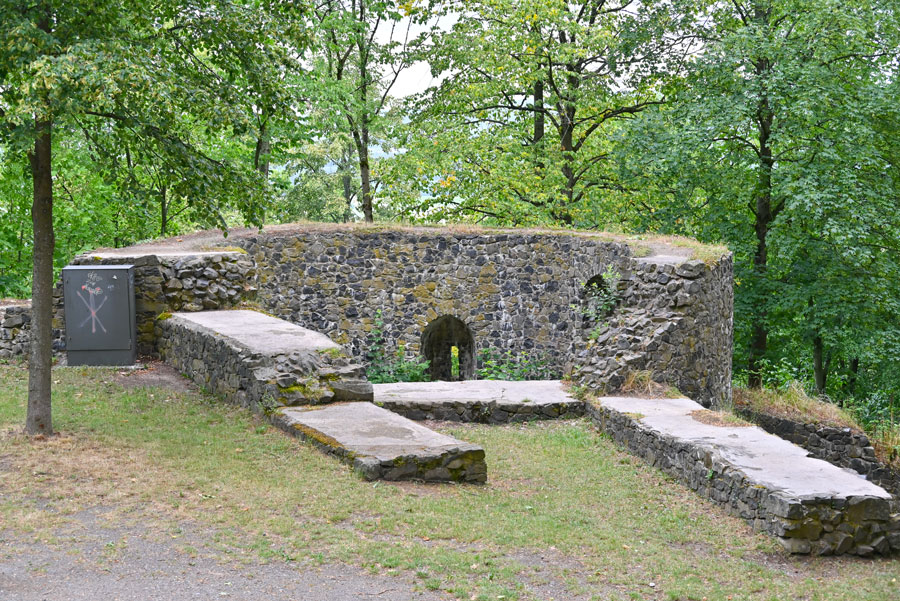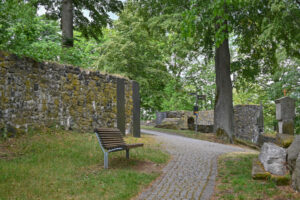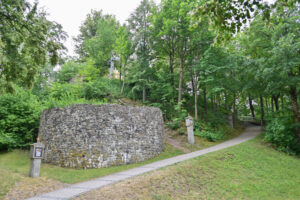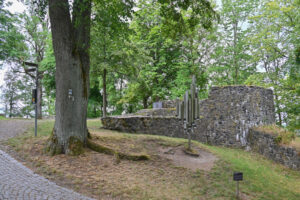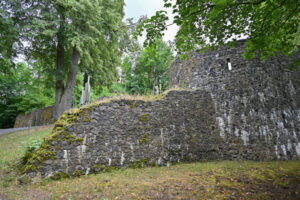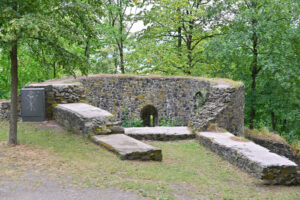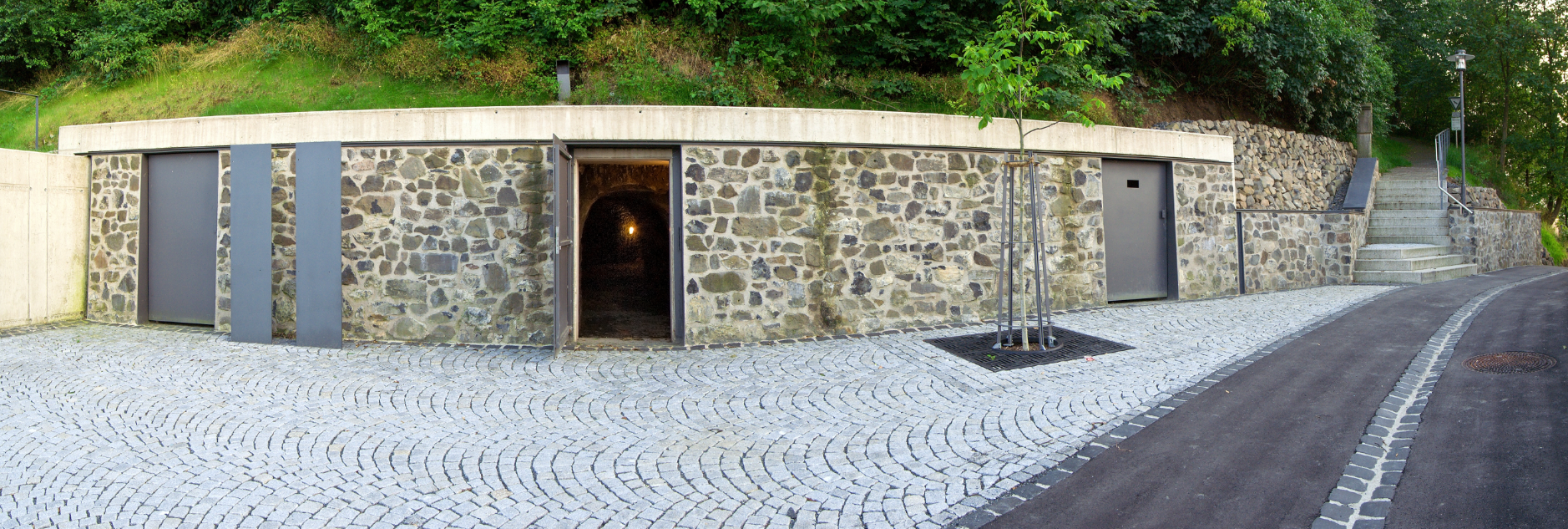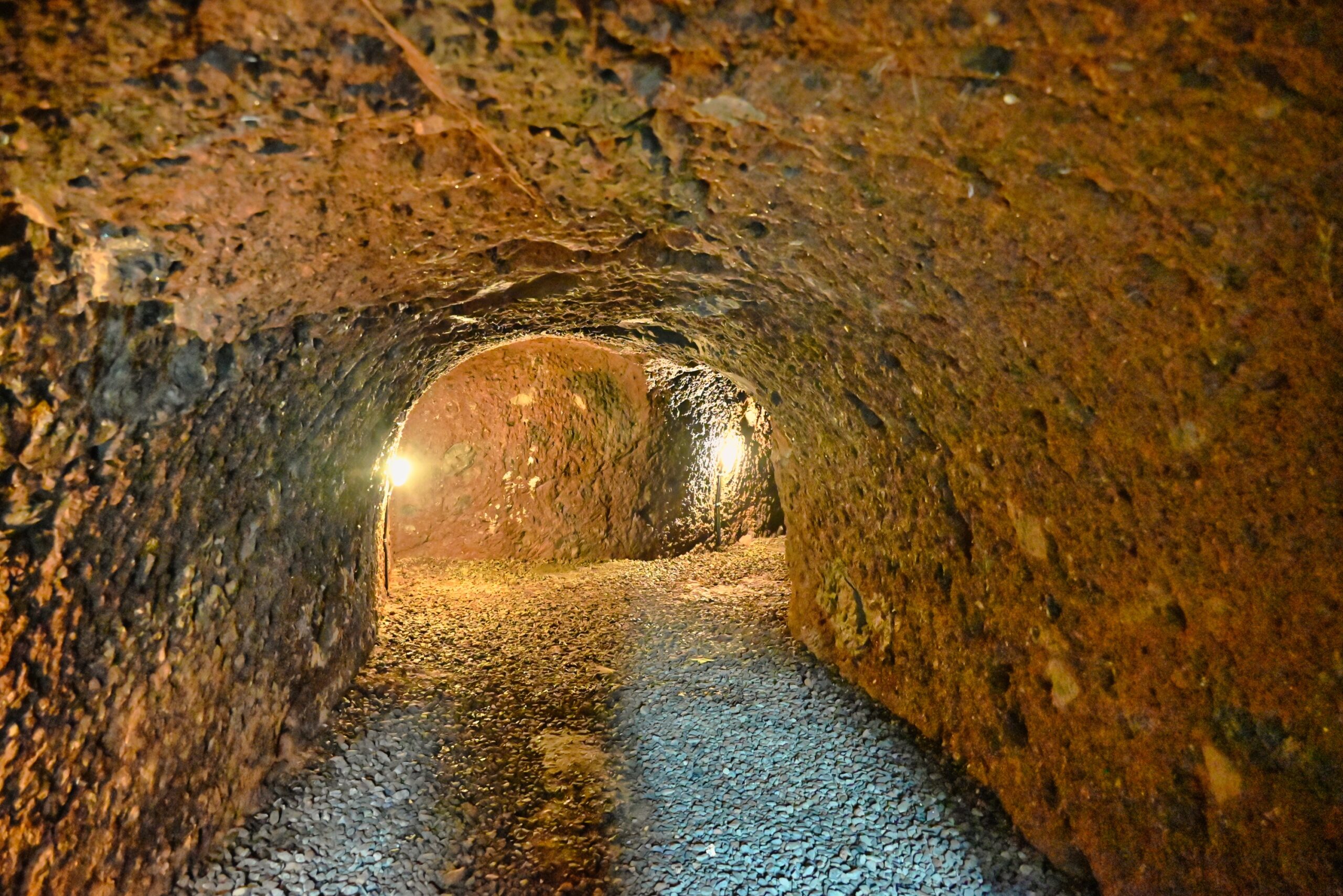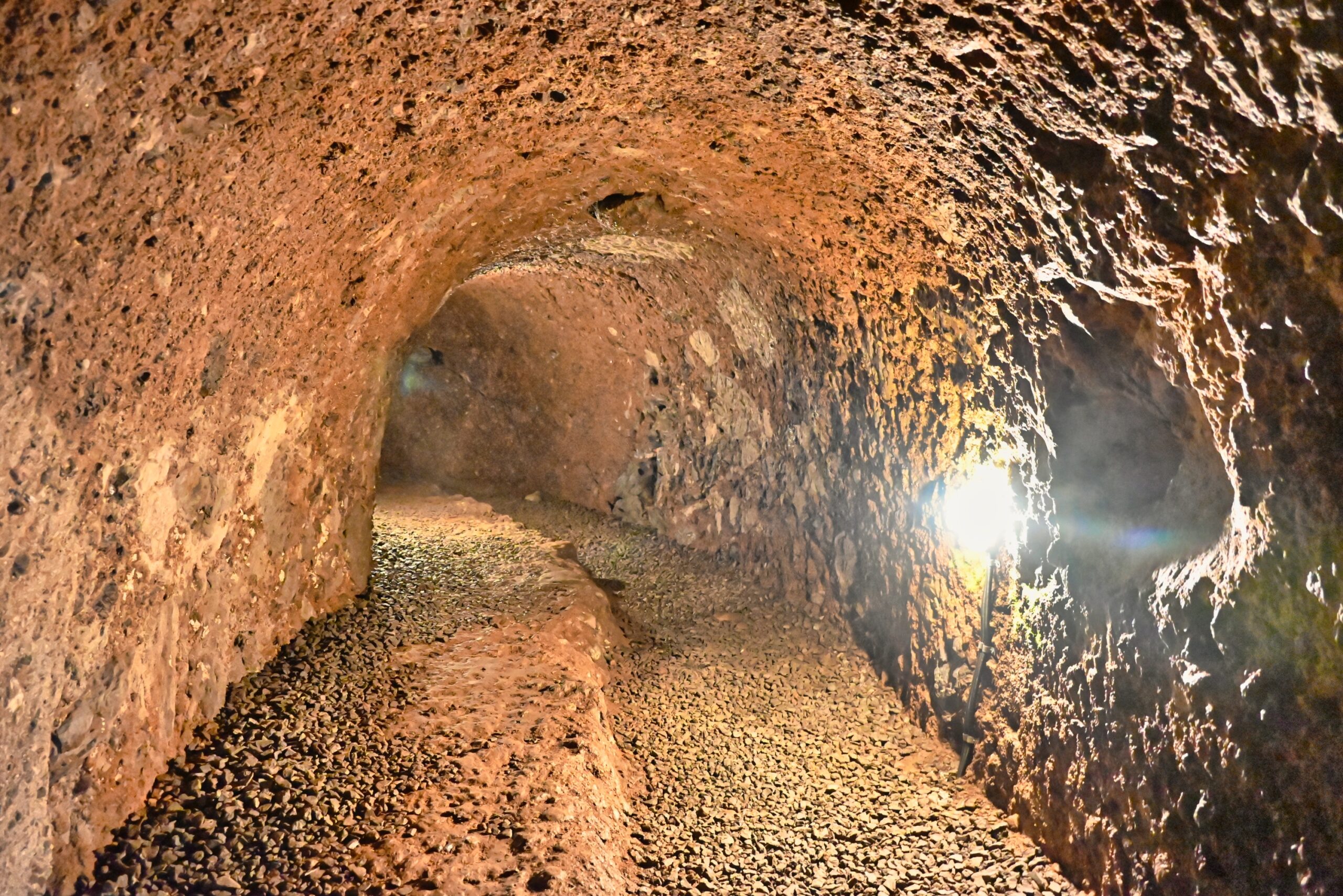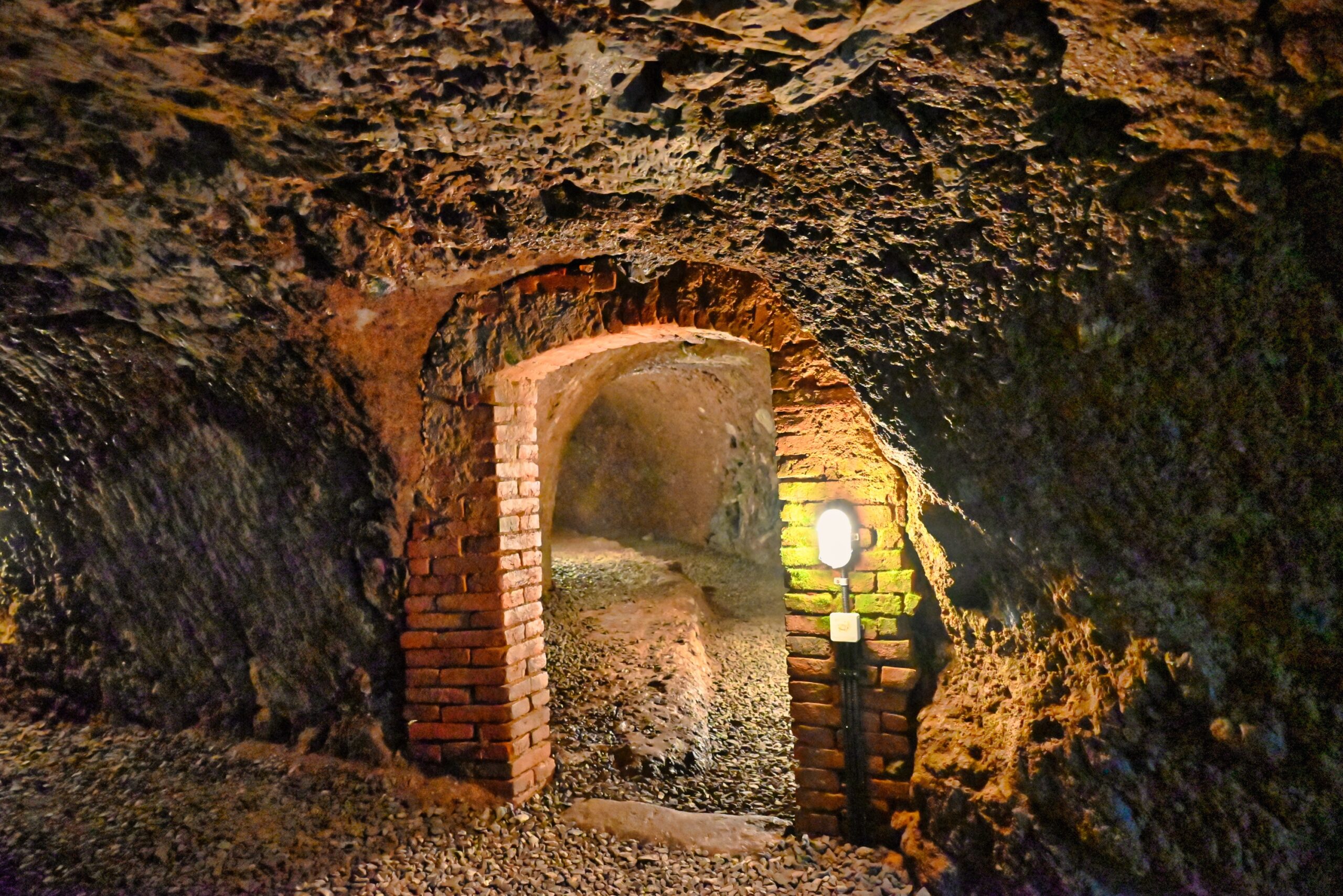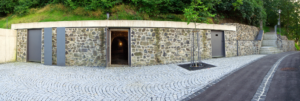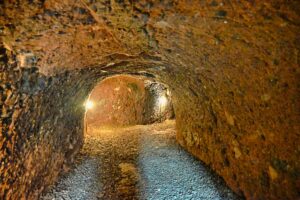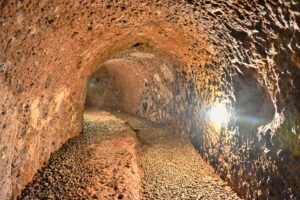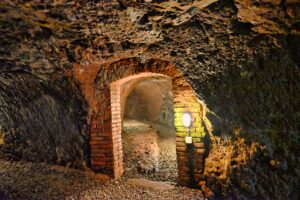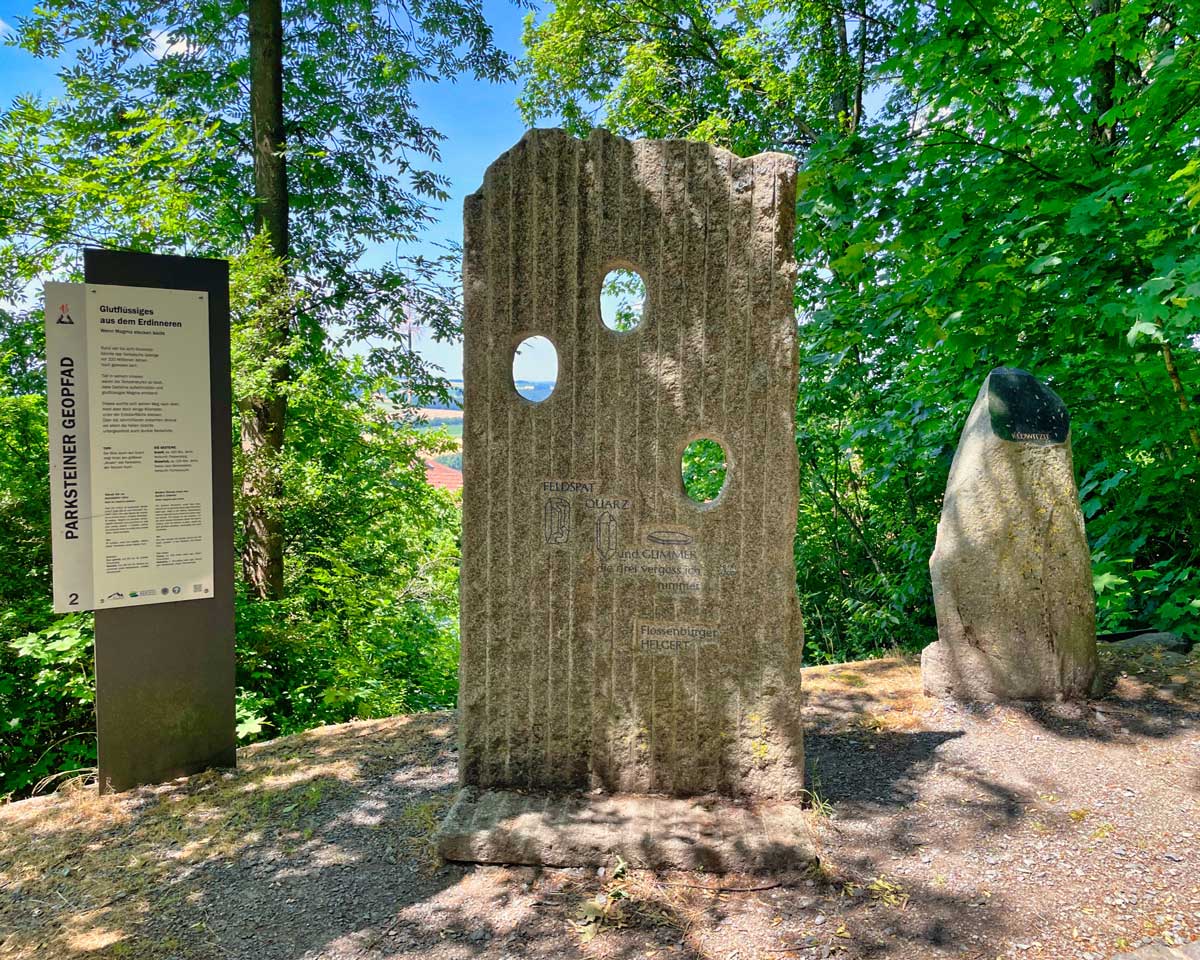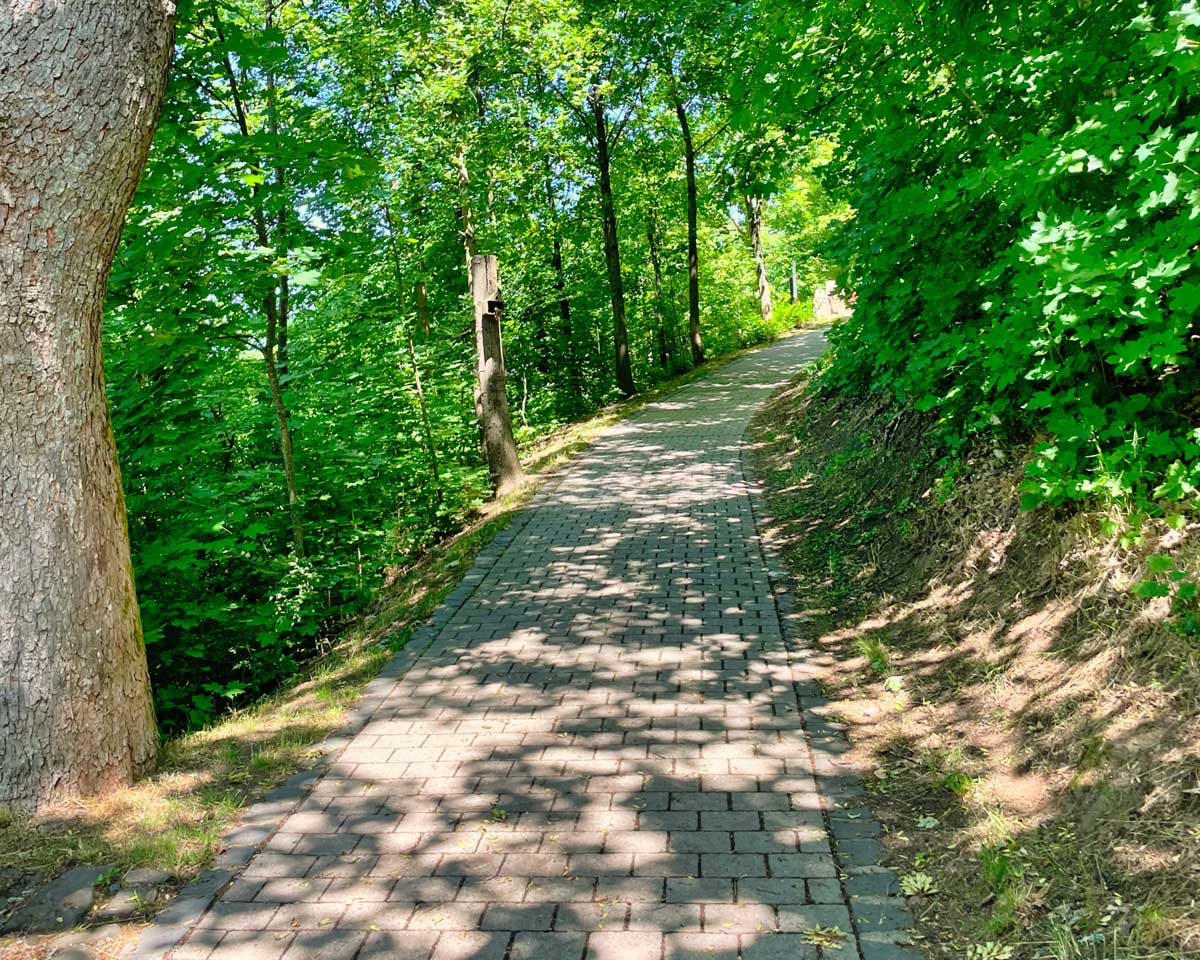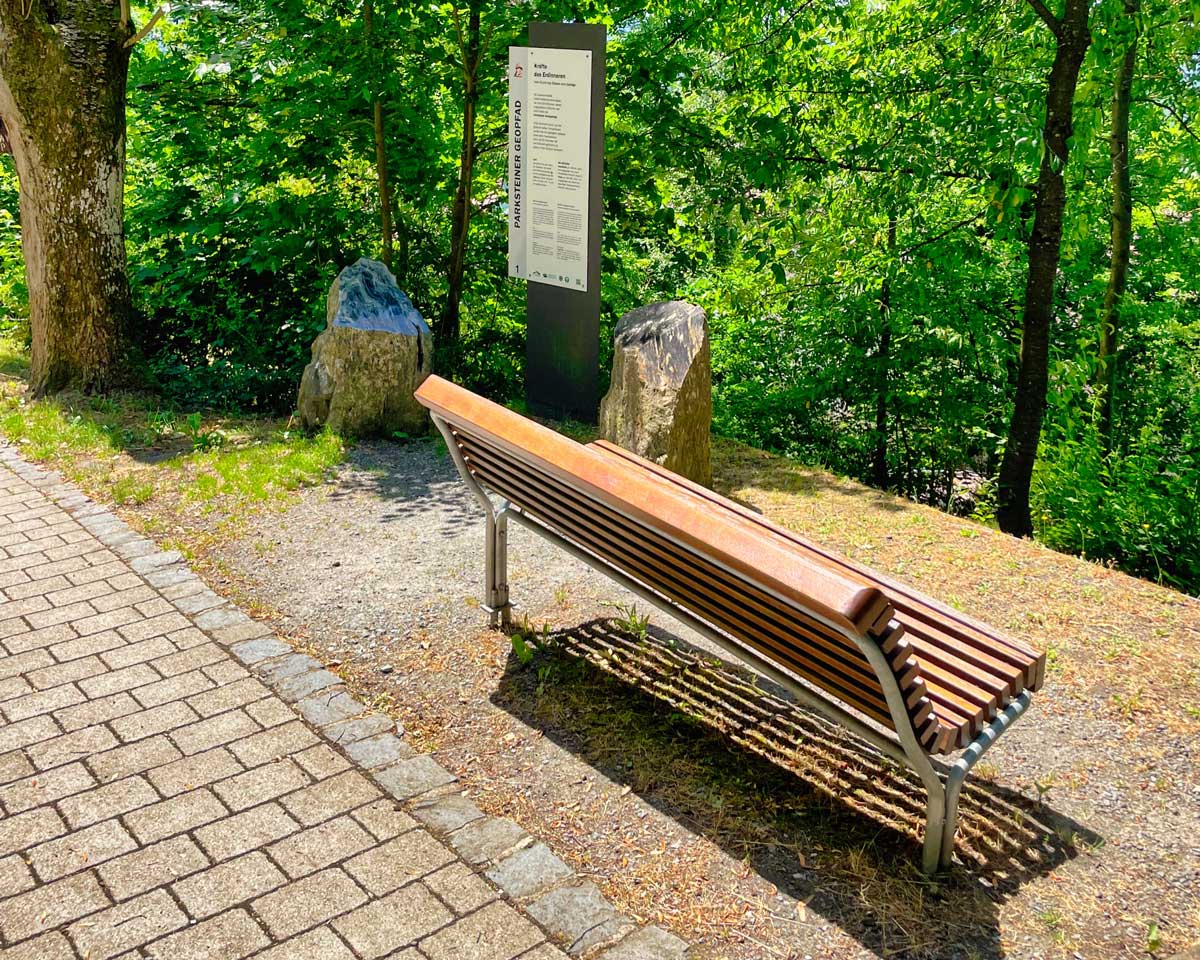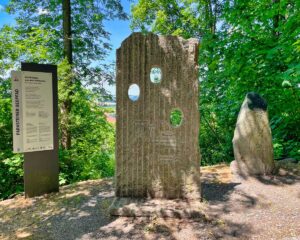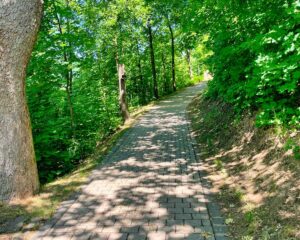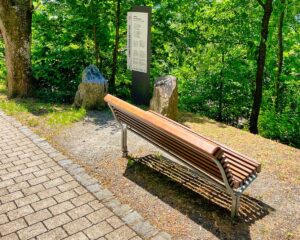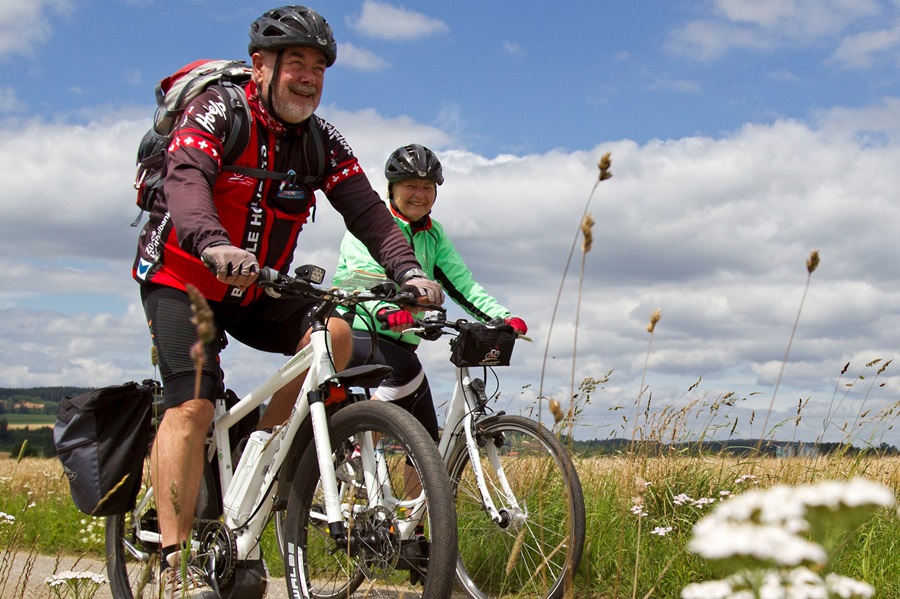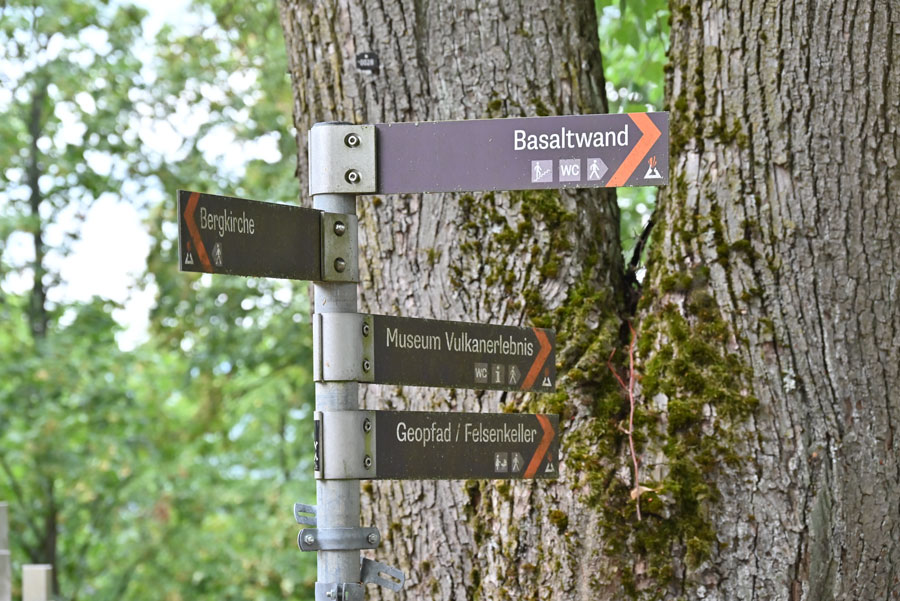
Basalt cone Parkstein
Visit the "most beautiful basalt cone in Europe" according to Alexander von Humboldt with its geological and historical attractions.
"It rises from flat land, a steep mountain, greets far the green fields...", so the beginning of the Parkstein song, which wonderfully describes the uniqueness of the basalt cone "Hoher Parkstein". In the bay of the Weiden basin, the volcano stands out strikingly from the landscape and greets with its little mountain church far into the country.
Not only Alexander von Humboldt was once impressed by the High Parkstein and ennobled it as a "most beautiful basalt cone in Europe". Already in 1937, the basalt cone was placed under nature protection because of its uniqueness and rare plant diversity. Even today, Parkstein's special geology still convinces geoscientists, which is why in 2003 it was included in the list of the „100 most beautiful geotopes of Bavaria“ and in 2006 it was awarded the predicate „National Geotope“ was awarded.
The mountain lies at its peak at 595 m above sea level. A charming mountain church, castle ruins, the impressive basalt wall and last but not least the breathtaking view from the summit are waiting for you. Our geological trail and the rock cellars can be optimally integrated into a tour on and around the basalt cone. Convince yourself of its beauty on site and afterwards learn everything about its formation about 24 million years ago in the museum.
Would you like to take a look at our basalt cone live? Then click here!
Basalt wall
From the parking lot at the basalt wall you can admire the unique basalt column structure of the Parkstein. The basalt wall rises 38 meters high here and leaves no visitor unimpressed. Nowhere else does the basalt formation appear in such a perfect beauty and mightiness. The basalt columns, sometimes 5-, sometimes 6- or 7-cornered, were formed by cooling and exposed by erosion as well as by human hand.
Today, a natural stage is presented at the foot of the basalt cone against the magnificent backdrop of the basalt wall. In the summer, theater performances of the Basalt Theater, serenades and civic festivals take place (Calendar of events Parkstein).
The exciting geological processes behind its origin can be seen in the department of "The volcano emerges". get to know in the museum.
Lourdes Grotto
From the parking lot, a few steps lead up to the Lourdes Grotto, which was carved into the rock around the turn of the century (1900). A statue of the Virgin Mary adorns the grotto.
Mountain church
In the past, a proud castle adorned the rock; today, a neat little church adorns the summit.
At the top of the mountain, next to the neo-Romanesque Mountain Church of St. Mary to the 14 Helpers in Need (View inside) a fantastic view of the Upper Palatinate hills and the Upper Palatinate Forest. The little church was built in 1852 as a place of pilgrimage and was misused as an air guard base during the Second World War. Today, the mountain church is popular for May devotions, Stations of the Cross and especially for weddings.
Inside the church are a Altarpiece of the 14 helpers and a Statue of the Virgin Mary saved from the former chapel in the village during a fire.
In the exterior of the church there is an orientation board, the so-called "Mauermann Plate", with which the towns and villages can be assigned to the unique view into the Upper Palatinate Forest.
Enjoy the magnificent view from the basalt cone! Resting benches, the green surroundings and the incomparable panorama invite you to linger.
Castle ruin
On the way to the top you will pass the old walls of the once magnificent Castle complex of the "Hoher Parkstein". The castle was first mentioned in a document in 1052. Until its demolition in 1759, it experienced an eventful history (A short chronology of Parkstein).
The legend about the origin of Parkstein tells that once a count was hunting in the forests around Parkstein. When he spotted a magnificent boar, he chased it up a hill and killed the animal there. Enchanted by the view and beauty of the place, he decided to build a castle here. The mountain and the castle were called Parkstein (lat. porcus = boar) from then on because of this legend.
Today, only the remains of the walls of the castle have been preserved. If you approach the historic courtyard, you have just passed through the former main gate. Some towers, such as the Schildwachenturm, the Pulverturm or the Hungerturm are still clearly recognizable and give an idea of the life at that time in the proud Parkstein Castle. The castle complex was once owned by great rulers and served as the seat of the powerful land judges until its demolition.
You can learn more about the history of the village and the Veste Parkstein in the section "Local History" in our museum. A 3D view of the castle is shown here by local historian Bernhard Weigl: Video.
Rock cellar
Explore the inside of the volcano! Interesting inclusions in the rock await you in the rock cellars.
When descending from the basalt cone, a detour to the rock cellars in Kapuzinergasse is worthwhile. Here you can view the Parkstein volcano from the inside and discover interesting rock inclusions.
These testify to the enormous forces of the former eruptions. Blocks up to several meters in size of a lighter rock formation are stuck in the dark debris rocks. These are often rounded, an expression of the fact that they have been moved up and down several times by explosions, as in a ball mill. The cellars were originally created as storage cellars for food and beer.
Markt Parkstein renovated the three rock cellars a few years ago and made them accessible to the public again. They are daily open from 8 a.m. - 8 p.m. and can be visited free of charge.
In front of the rock cellars you will get general information about the formation of volcanoes in the region. The information board is part of the GEOTour Volcanoes of the GEOPARK Bavaria-Bohemia and the GEO Center at the KTB Windischeschenbach.
Note: The latest scientific findings on the eruption events of the Parkstein volcano can be found on an information board inside the right cellar. You can also find more information on our homepage under “News„.
More information about the rock cellars on the pages of the VFMG Bezirksgruppe Weiden under the category Parkstein - Felsenkeller www.vfmg-weiden.de/ming
Geopath
Discover the geological history of Upper Palatinate rocks along the geological trail as you climb the basalt cone.
On the Joseph Edenhofer Trail up to the summit of the basalt cone, you pass the Parkstein Geological Trail. Rock exhibits tell visitors exciting stories of mountains, seas and rivers that shaped the landscape of the Upper Palatinate for over 500 million years. Here, the history of the earth becomes close enough to touch.
The stations at a glance:
1. The Variscan Mountains
2. Magma from the depths
3. Minerals and crystals
4. "Land under" in the Upper Palatinate
5. The Frankish Line and the Broken Upper Palatinate
The geopath is a joint project of the Parkstein market, the VFMG district group Weiden and the GEOPARK Bavaria-Bohemia and was financed from urban development funds.
A leaflet with more detailed information about the geological trail is available free of charge at the museum and at the Infopoint.
You can also find more information on the VFMG website under the heading Parkstein-Parksteiner Geopfad. www.vfmg-weiden.de/ming
Around the basalt cone
Hiking
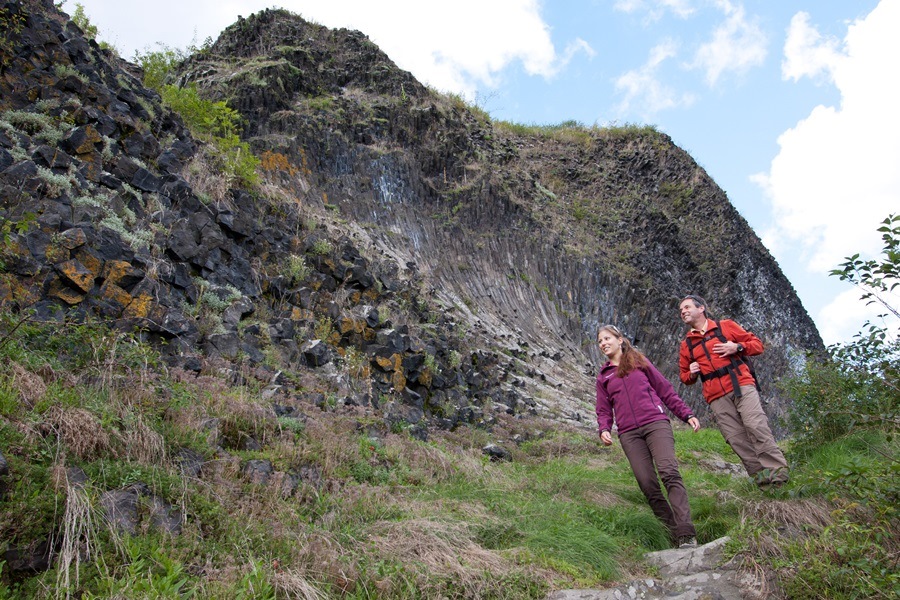
Excellent hiking opportunities are offered by ten ring trails and two long-distance trails.
More information about hikingMore leisure fun
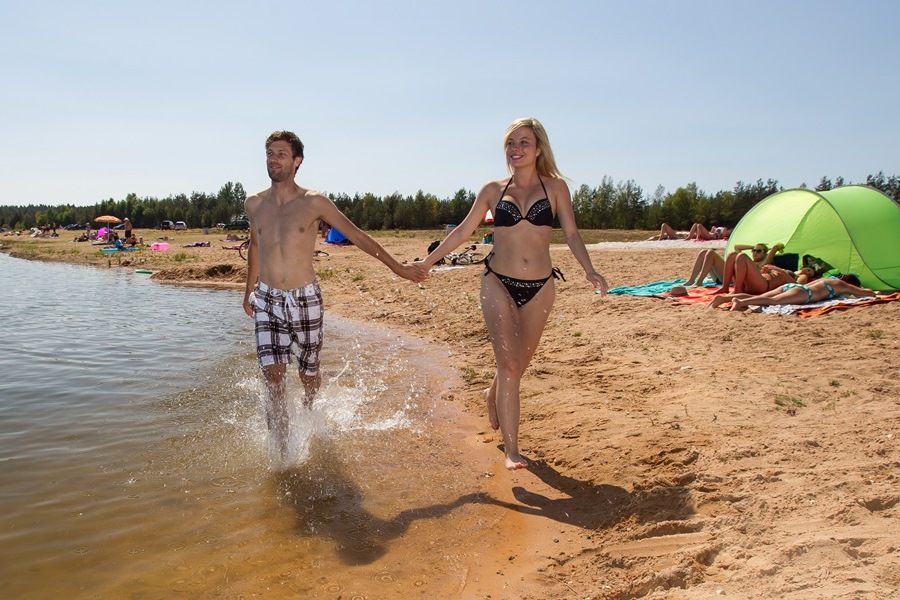
Swimming, horseback riding, fishing, Nordic walking, culture and sports and much more...
More information
